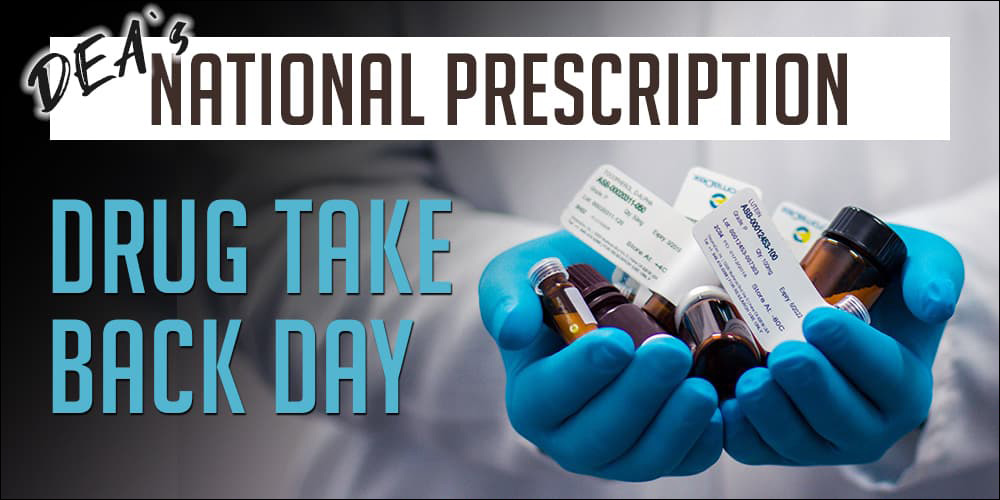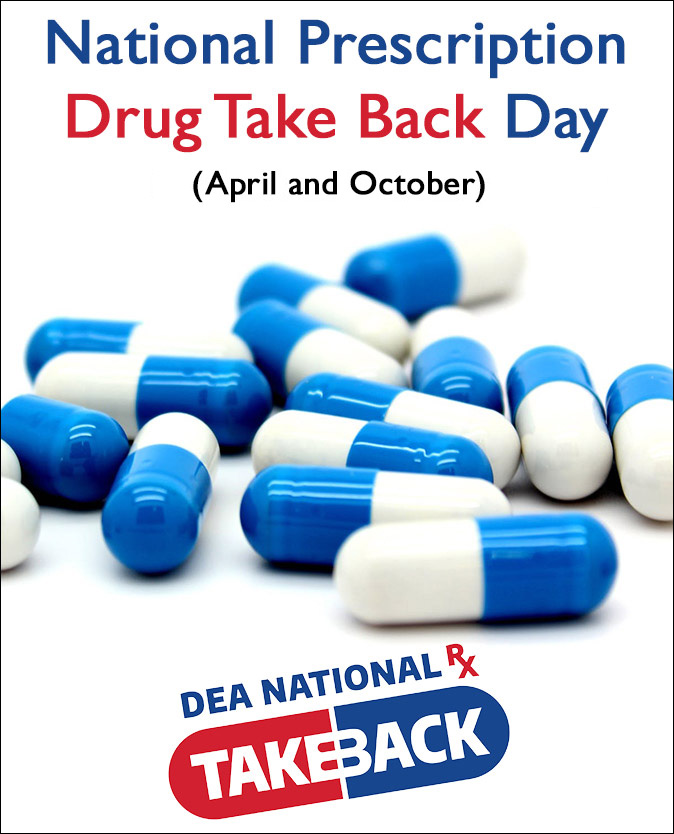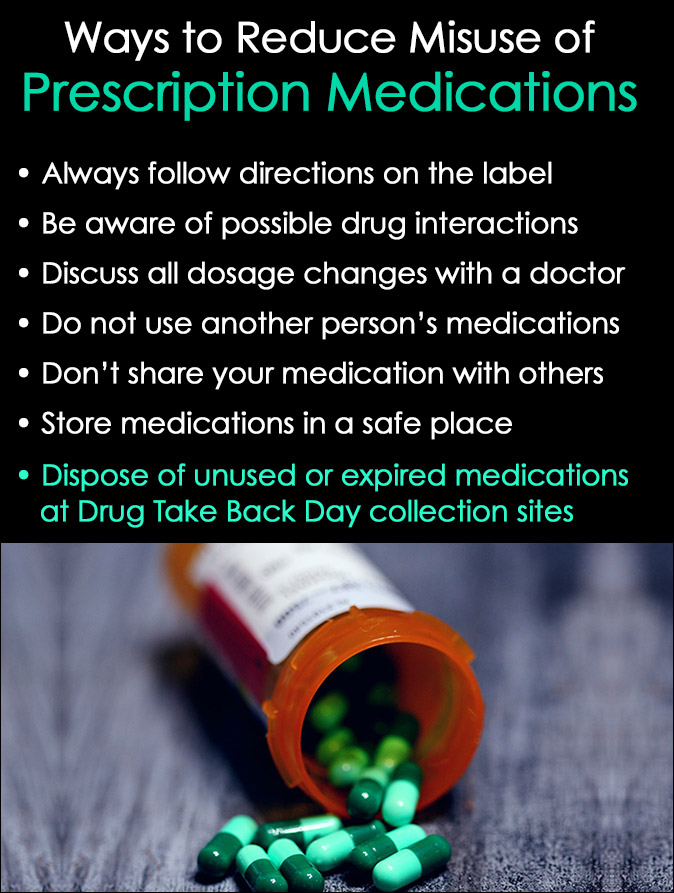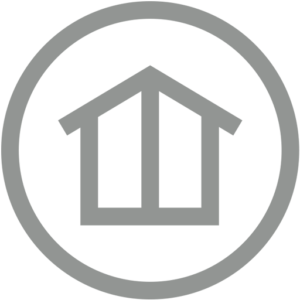
National Drug Take-Back Day is Saturday, April 26, 2025.
The next Drug Take Back Day will be Saturday, October 25, 2025.
Even though most people consider prescription medications to be safe, the misuse and abuse of prescription drugs has become a serious public health problem in America.
More than 59 million people over the age of 12 misused drugs in the past year according to the National Survey on Drug Use and Health and the National Center for Drug Abuse Statistics.
The twice-annual National Prescription Drug Take Back Day plays an important role in reducing the number of unused medications and helps prevent drug addiction and overdose deaths.
Drug Take Back Day is available to the public around the country every year on the last Saturday in April and October.
Taking part in Drug Take Back Day offers a safe and proper way to dispose of medication and reduces the chances of prescription drugs being misused.

The Need for Drug Take Back Day
Easy access to unused medication is one of the leading factors contributing to the prescription drug misuse problem in America.
People are often misinformed about the addictive nature of popular medications, especially opioids like oxycodone.
Most people are aware of the dangers of taking illegal drugs. But many falsely assume that prescription drugs are less harmful because a doctor prescribed them.
One study was published jointly by the University of Michigan, University of Colorado School of Medicine, and Columbia University in New York. It found that legitimate opioid use before high school graduation is associated with a 33 percent increase in the risk of future opioid misuse after high school.
It’s unfortunate that teens and young adults are prescribed opioid medications with such a high frequency. This can lead to seeking more when the prescription runs out because they like the way the drugs make them feel.
Approximately 60 percent of adolescents using prescription drugs for non-medical use say they get them from family and friends, according to the global movement, Do Something.
Data from the National Institute on Drug Abuse (NIDA) shows how pervasive prescription drugs in our society, with more than 80 percent of older patients using at least one prescription medication daily.
The CDC reported from 2017 to 2020, over 49 percent of the United States population had used prescription drugs in the past 30 days.
It’s too easy to get access to prescription drugs and use them for non-medical purposes, which can lead to a dependence or addiction.
Teens and young adults who misuse prescription drugs are more likely to use other drugs. This can increase the risk of a fatal overdose from mixing different kinds of drugs due to polysubstance abuse.
Mixing a medication like Xanax and alcohol can be extremely dangerous.
Properly disposing of prescription drugs during Drug Take Back Day can reduce the dangerous consequences of unused medication.

Drug Take Back Day Helps Reduce the Misuse of Prescription Medications
It’s necessary to follow the directions when taking any type of prescription medication and to properly store it in a safe place.
This is important for the health and safety of those taking the medication, but also for those who might have access to it.
Ways to ensure prescription medications don’t get misused:
- Always follow the directions given by the pharmacist on the label
- Be aware of possible interactions between drugs, both legal and illegal
- Discuss any changes in use or dosage with your doctor
- Don’t use another person’s prescription medications
- Don’t share your medication with other people
- Store prescription medication in a safe place so others don’t have access to it
- Dispose of medication that is unused, expired, or not needed. The FDA has published guidelines for the safe disposal of medications
- Dispose of medication not needed on DEA Drug Take Back Day
Drug Take Back Day Resources for Disposing of Prescription Drugs
Prescription drugs can fall into the wrong hands when unused medications are lost, stolen, or misused.
This is why the DEA’s National Prescription Drug Take Back Day focuses on collecting and disposing of old medications.
Prescription Take Back Day happens twice a year in April and October, and the DEA Diversion Control website offers links to resources about collection centers that are available throughout the country.
The website provides documents and tools that offer a wide range of resources about how to dispose of expired medications.
The organizations that run Drug Take Back Day also offer year-round drug disposal programs for people who miss the event.
Law enforcement agencies are encouraged to take part and host a collection site to make it easy for discreetly disposing of prescription drugs.
Frequently Asked Questions
Where can I find a National Drug Take Back Day near me?
Visit the DEA Take Back Day website and click on the “Collection Site Locator” button at the top of the page.
Enter your zip code, or county, city, or state to find the closest collection sites near you.
Many cities have collection sites at pharmacies, police departments, and hospitals.
You can also do a Google search for “drug take back near me” to get a list of drug collection sites in your area.
When did National Prescription Drug Take Back Day begin?
The Drug Enforcement Administration (DEA) started National Prescription Drug Take Back Day on September 25, 2010, for disposing of prescription drugs.
It was the first nationwide event to collect expired and unwanted drugs to reduce prescription drug abuse and accidental poisonings.
What types of medications are accepted at National Drug Take Back Day?
Most collection sites accept unwanted or expired medications, and some allow vaping devices and cartridges if the batteries are removed.
- Prescription medications such as pills and capsules, including opioids
- Non-prescription pain relievers, and cold or allergy pills and capsules
- Vitamin and supplement pills or capsules
Items not accepted include:
- Aerosol cans
- Liquids
- Inhalers
- Syringes and needles
- Medications that contain iodine
- Non-prescription illegal drugs
Are drugs in prescription bottles accepted?
No, most collection centers will not take prescription bottles. Pills or capsules should be placed in a clear, sealed bag.
Remove any prescription labels with personal information.
Does Drug Take Back Day accept discarded EpiPens?
No, Drug Take Back Day does not accept EpiPens or any auto-injectors. EpiPens are considered “sharps” so you will need to find a local safe needle exchange or disposal center to discard them.
Some pharmacies and medical facilities accept sharps for disposal.
Can veterinarians take part in Drug Take Back Day?
Only veterinarian clinics that are registered as an official DEA site are allowed to collect and dispose of medication for animals.
Many veterinarians are aware of the collection dates and locations and encourage pet owners to properly dispose of old medicine.
What happens to the drugs that are turned in at the collection sites?
The drugs collected at the take back events are counted, weighed, and processed in a safe and secure manner by the DEA and local law enforcement.
They are then transported to a secure facility where they are safely incinerated and destroyed so they will not be misused or end up in the water supply or landfills.
How has the program had an impact on prescription drug abuse rates?
Since 2010, National Prescription Drug Take Back Day has collected and destroyed over 16 million pounds of medications.
While there aren’t any statistics regarding the direct impact on prescription drug abuse rates, it is viewed as a positive way to reduce prescription medication misuse and abuse.
It is considered one of many tools for fighting the opioid epidemic and drug addiction in the United States.
Related Posts
- Long Term Side Effects of Drugs and Addiction
There's a lengthy list of long-term side effects of drugs and addiction that affect both…
- Oxycodone Side Effects and Dependence or Addiction
What is Oxycodone? Oxycodone is an opioid drug, commonly known under the brand names Oxycontin…
- Whippets Drug Side Effects, Dangers and Addiction
The Whippets Drug is one of the most common inhalants used recreationally by teens and…
